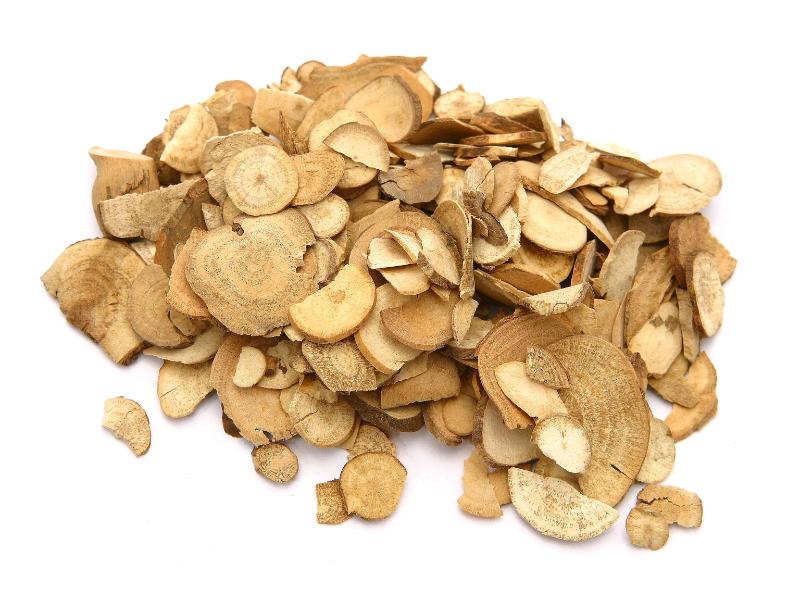Search in medicinals
Linderae Radix
Lindera [root]
乌药 〔烏藥〕 wū yào

Alternate Chinese names: 天台乌药 tiān tái wū yào; 台乌 tái wū; 台乌药 tāi wū yào
Kingdom: Plant
Origin in PRC Pharmacopoeia: Lindera aggregata (Sims) Kosterm. (PRC Pharmacopoeia)
Origin in unofficial sources: Lindera aggregata (Sims) Kosterm.*; Lindera strychnifolia (Sieb. et Zucc.) Villar
Use: Medicinal
Category: Qì-rectifying agents
Properties: Acrid; warm.
Channel entry: Lung, spleen, kidney, bladder channels.
Actions and indications:
- Moves qì and relieves pain: Pain in the chest and abdomen from congealing cold qì stagnation.
- Warms the kidney and disperses cold: Frequent urination and enuresis.
Dosage and method: Oral: 3–10g in decoctions.
Warnings: Unsuitable for dual vacuity of qì and blood with internal heat because of its acrid, warm, and drying properties.
Product description: This root is cylindrical or spindle-shaped and slightly contorted, with scant bulging nodes. It is 6–15 cm long and 0.5–2.5 cm thick. Its exterior surface is a yellowish, reddish or blackish brown, with fine wrinkles and the scars of removed roots. It bears annular fissures, and the skin often peels away to reveal a fibrous woody interior. This root is hard and does not break easily. It is cut into oblique slices, the cut edge of which is pale yellow in color, with clearly observable medullary rays and annual rings.
Quality: The roots should be soft and farinaceous and should be light brown on the cross cut. The best quality is said to come from Tiāntái in Zhèjiāng Province and is often specified.
Production area: Mainly produced in Zhèjiāng, Húnán, ānhuī, Guǎngdōng and Guǎngxī.
Etymology: The name wū yào 乌药, black medicine,
reflects the color of this agent.